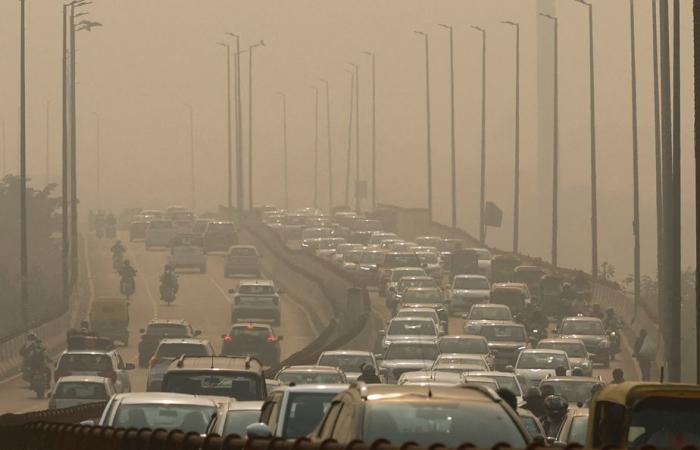(New Delhi) The authorities of the Indian capital New Delhi tested on Friday a prototype “sprinkler” drone to treat the most stubborn pockets of air pollution, a solution immediately described as a “band-aid” by experts.
Published at 7:50 a.m.
The megacity of 30 million inhabitants is permanently drowned in a cloud of toxic industrial or automobile fumes to which are added, at the start of each winter, those of agricultural burning coming from neighboring states.
These fumes cause concentrations of PM2.5 microparticles – the most deadly – to rise to levels dozens of times higher than World Health Organization (WHO) standards.
According to a scientific study published in June, air pollution is responsible for 11.5% of mortality in Delhi, or 12,000 deaths per year.
Efforts by local authorities to combat air pollution have so far had little effect.
On Friday, the municipality tested in front of the press a drone loaded with water intended to spray certain areas to disperse dust.
“We studied different technological and practical solutions from all over the world,” commented municipal environmental official Gopal Rai.
“This drone is part of a pilot project carried out by a private company. If the tests are conclusive, we will go further,” he added.
According to its “minister”, the municipality has launched a call for tenders for the purchase of two other drones to make up a fleet intended to intervene throughout the city, with an area of 1,500 km2.
A technician told AFP on condition of anonymity that each drone could drop a maximum of only 16 liters of water.
“This is not a solution to air pollution,” Sunil Dahiya, of the NGO Envirocatalysts, told AFP. “This does not go beyond the plaster stage,” he added.
In recent years, the city of New Delhi has stepped up initiatives to combat air pollution, without much success.
After encouraging motorists to turn off their engines at red lights, in 2021 it inaugurated a 25 m high tower equipped with fans supposed to filter 1000 cubic meters of air per second. This project was quickly abandoned.
“Stopping (pollution) emissions at their base is much more important,” Anumita Roychowdhury, of the Center for Science and the Environment, told AFP.
“We have at our disposal enough studies which show that vehicles, industry and construction are the sectors in which we must act to obtain results,” he stressed.






